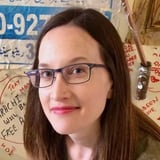Summary
Time is always on our minds in very practical ways—apportioning it for various projects, creating and prioritizing tasks, calendaring, and tracking deadlines and deliverables. Time does, however, have more abstract qualities that require our attention. It drives how we imagine future worlds, set our organizations' visions, track technological trends, manage our enterprises, plan our careers, roadmap our products, and choreograph our people. Each of these activities vary in scale and size, and each has its own cadence. Some focus on years, some on months, some on weeks, some on days. In this talk, Elizabeth Churchill will discuss ways of thinking about time in UX beyond classic, practical notions of "time management". She'll share personal stories from the enterprise and the academy, and invite a conversation about personal journeys of personal life long impact in UX.
Key Insights
-
•
Early collaboration tools like the Yeti poster in Japan prioritized social capital to increase trust before driving productivity tool usage.
-
•
Physical public displays fostered creative interpersonal rapport better than traditional project management tools alone.
-
•
Google’s Jamboard integrates real-time collaboration with cloud services, enhancing both synchronous and asynchronous team interactions.
-
•
Material Design codifies UX best practices into a scalable framework used extensively across Google’s products and by external developers.
-
•
Small tactical UX questions such as text field boundaries and text legibility over images have measurable impacts on usability and accessibility.
-
•
Enterprise UX research increasingly applies ethnographic methods to understand and improve collaboration between designers and developers.
-
•
Breaking down organizational silos involves designing tools that enable cross-team feedback and trusted iteration workflows.
-
•
Time should be considered as a design material encompassing calendar time, task time, and coordination time for more strategic UX impact.
-
•
Long-term impact and legacy are underappreciated in UX; capturing and narrating this over years gains more organizational support.
-
•
Persuading leadership to adopt internal collaboration tools requires linking benefits to visible business metrics like employee engagement and retention.
Notable Quotes
"The CEO came to me and said there is no collaboration happening and yet we have all of these tools, but what he was really looking for was rapport."
"Public displays and spaces that people collaborate around is both old and new, but what’s possible now is integration with cloud and product ecosystems."
"Material Design is not just a framework, but a design philosophy and a service with online resources and a community."
"We answered very tactical questions like how to design text fields so people can find where their cursor is more easily."
"The tricky part of time boxing is making sure it doesn’t become a slave to the structure, losing sight of the bigger goal."
"Trust and social capital create the fabric on which productive tools can thrive and be more used effectively."
"The introduction of collaboration tools can break down silos by getting more people involved in feedback loops."
"Time as a material for design strategy means thinking about how this moment’s work has legacy into the future."
"Often in enterprise, the UX work is seen as just productivity tools, but really it’s about building collaboration and trust."
"We had to show leadership emails from people pleading not to turn off the collaborative displays to prove their value."
Or choose a question:
















More Videos

"If designers spend more time talking about titles than their work, we’re just gazing into our navels."
Adam Cutler Karen Pascoe Ian Swinson Susan WorthmanDiscussion
June 8, 2016

"Playing politics in UX leadership is about maximizing relationships ethically to advance your agenda, not about being underhanded."
Peter MerholzThe Trials and Tribulations of Directors of UX (Videoconference)
July 13, 2023

"If you haven’t designed who your teams are and who your players are, expecting people to comply with standards won’t work."
Lisa WelchmanCleaning Up Our Mess: Digital Governance for Designers
June 14, 2018

"The solutions are out there; we just need the will to implement them."
Vincent BrathwaiteOpener: Past, Present, and Future—Closing the Racial Divide in Design Teams
October 22, 2020

"If you forget the individual, you cut out psychological safety, and that’s the foundation of strong teams."
Brenna FallonLearning Over Outcomes
October 24, 2019

"Thick data is the opposite of big data; it’s stories, qualitative, and crucial during moments of rapid change."
Tricia WangSpatial Collapse: Designing for Emergent Culture
January 8, 2024

"We used a Python algorithm with a correlation matrix to identify meaningful clusters from survey responses."
Edgar Anzaldua MorenoUsing Research to Determine Unique Value Proposition
March 11, 2021
"We want to build teams with diverse skill sets so we can create a full picture during the knowledge creation phase."
Designing Systems at Scale
November 7, 2018

"A lot of developers are way too confident they write perfect code; testing bug fixes often reveals hidden issues."
Erin WeigelGet Your Whole Team Testing to Design for Impact
July 24, 2024
















